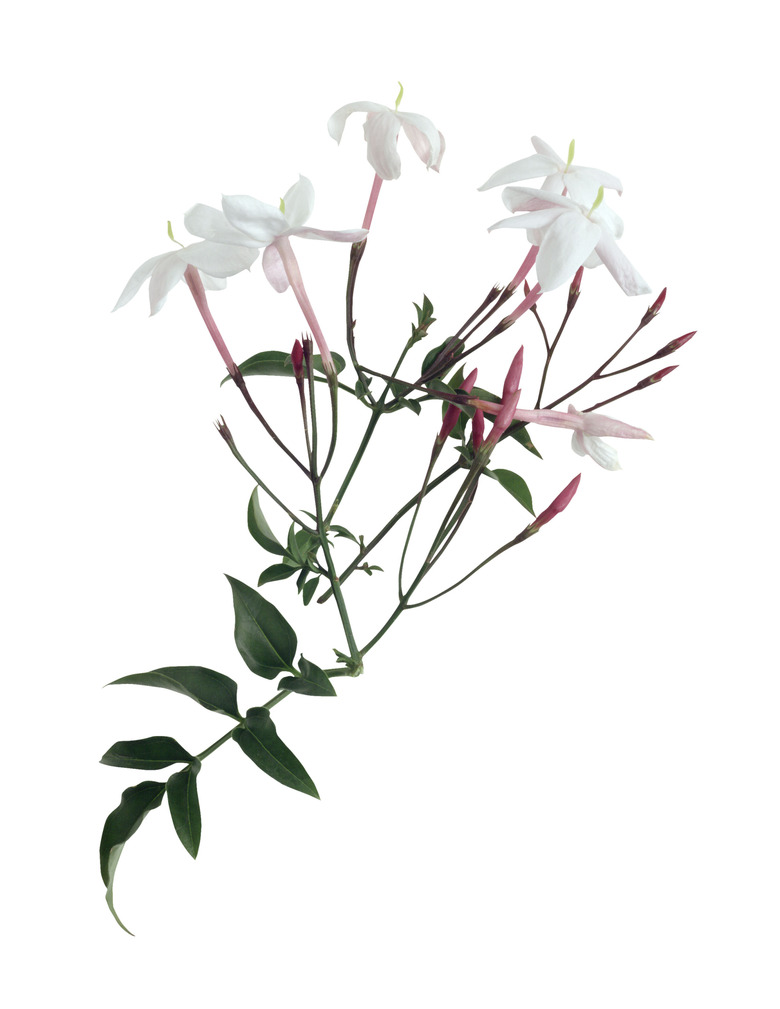Do You Need To Cover Jasmine Vines In The Winter To Keep Them From Freezing?
Step 1
Tropical jasmine vines such as Jasmine multiflorum and J. officinale are not tolerant of frost and need to be protected when temperatures approach freezing. A commercial frost cloth draped over them can protect them at temperatures down to 20 degrees Fahrenheit. Support the drape so that it is held over your plant but does not touch it. Allow the cloth to hang down to the ground so that it traps warmth and humidity from the soil.
Partially Hardy Jasmines
Step 1
Jasmine sambac, or Arabian jasmine of the Oleaceae family, is a widely cultivated species with fragrant, white flowers. Its stems are killed by frost, but it regrows from the roots provided the temperatures does not fall below 10 degrees Fahrenheit. Protect the soil around its main stem with a layer of organic mulch at least 3 inches thick during frosts. Drape with a frost cloth to protect the leaves and stems as Arabian jasmine grows back slowly and may produce few flowers the year after being damaged by frost.
Step 2
- Tropical jasmine vines such as Jasmine multiflorum and J. officinale are not tolerant of frost and need to be protected when temperatures approach freezing.
- Its stems are killed by frost, but it regrows from the roots provided the temperatures does not fall below 10 degrees Fahrenheit.
Hardy Jasmines
Step 1
Winter jasmines such as J. nudiflorum not only survive frost but flower during the winter. Originally from China, this deciduous shrub with arching and trailing stems produces yellow, unscented flowers from October through March. It thrives in a sunny spot and will survive temperatures down to 0 degrees Fahrenheit.
Frost Protection
Step 1
Grow jasmines in a sheltered, south-facing location to take advantage of all available sunlight. Keep your jasmine vines well watered during the winter as dry plants are more vulnerable to cold damage. Run a 100-watt light bulb, using an outdoor-approved fitting, under your frost cloth to provide additional heat. Place the bulb low down so that it heats all the air under the cloth. Commercial sprays designed to protect plants from frost do not work, according to the University of Arizona's urban horticulture agent Lucy Bradley.
Step 2
- Winter jasmines such as J. nudiflorum not only survive frost but flower during the winter.
- Keep your jasmine vines well watered during the winter as dry plants are more vulnerable to cold damage.
